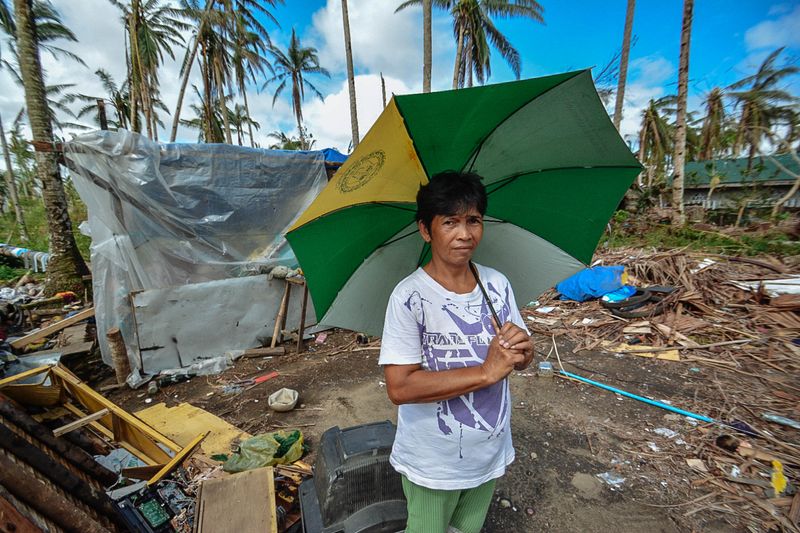New York City Declares State of Emergency over Flash Flooding
City Paralyzed by Heavy Rains
New York City has been hit by a severe storm, causing flash flooding and prompting the declaration of a state of emergency. Many of the city’s subway systems, streets, and highways have been inundated with water, leading to major disruptions and closures. The city’s airports have also been affected, with one terminal at LaGuardia Airport closing due to flooding. According to forecasters, up to 8 inches (20cm) of rain fell in some parts of the city, and more rainfall is expected in the coming hours.
A Dangerous Situation
Governor Kathy Hochul has warned that this storm is “dangerous” and “life-threatening.” As a result, she has declared a state of emergency not only for New York City but also for Long Island and the Hudson Valley. In her statement, Governor Hochul urged people to take precautions and emphasized the importance of avoiding travel on flooded roads. Fortunately, there have been no reported deaths or critical injuries thus far.
Suburban Areas and Transportation Systems Affected
The impact of the flooding extends beyond New York City itself. The town of Hoboken, located across the Hudson River, has also declared a state of emergency. In addition, the flooding has caused major disruptions to New York’s subway system and the Metro North commuter rail service. Some subway lines have been completely suspended, and numerous stations have been closed. The Metropolitan Transportation Agency has reported the use of inflatable rafts to rescue people trapped in buildings by the floods in Mamaroneck, a suburb north of the city.
Risks and Challenges in the Face of Climate Change
The severity of this flash flooding event raises important questions about the preparedness of New York City and its surrounding areas for extreme weather events. As New York’s chief climate officer Rohit Aggarwala pointed out, the city’s sewage system is not designed to handle the amount of rainfall it has experienced. This raises concerns about the adequacy of infrastructure to cope with the changing climate. With climate change intensifying extreme weather events, it becomes crucial for city planners and policymakers to assess and upgrade existing infrastructure to mitigate the risks posed by such events.
The Vulnerability of Basement Units
Of particular concern is the vulnerability of basement apartments to flooding. In the wake of this flooding event, questions are being raised about whether it is possible to make basement units safe from floods. As the city continues to grapple with the aftermath of the storm, it is important to address this issue and explore solutions, such as improved drainage systems and building regulations, to ensure the safety of residents.
Advice for Individuals and Authorities
In light of this flash flooding event, it is essential for individuals and authorities to take proactive measures to mitigate the risks associated with future extreme weather events. Here are some key pieces of advice to consider:
1. Stay Informed and Prepared
Stay updated with the latest weather forecasts and emergency alerts. Have an emergency kit ready with essential supplies such as food, water, flashlights, and batteries.
2. Avoid Traveling on Flooded Roads
Floodwaters can be deceptive and dangerous. It is crucial to avoid driving or walking through flooded areas to prevent accidents and injuries.
3. Improve Infrastructure Resilience
Invest in upgrading infrastructure to withstand the challenges posed by climate change. This includes improving drainage systems, reinforcing buildings, and implementing smart urban planning strategies.
4. Support Vulnerable Communities
Ensure that vulnerable communities, including those living in basement units, receive adequate support and resources to mitigate the risks of flooding. This may involve initiatives such as providing financial assistance for retrofitting buildings and creating public awareness campaigns.
Conclusion
The flash flooding in New York City serves as a stark reminder of the urgent need to address climate change and its impact on urban communities. As extreme weather events become more frequent and severe, it is crucial for cities like New York to prioritize resilience and preparedness. By investing in infrastructure upgrades and implementing proactive measures, the city can better protect its residents and mitigate the risks associated with future flooding events.

<< photo by Denniz Futalan >>
The image is for illustrative purposes only and does not depict the actual situation.
You might want to read !
- Hong Kong Grapples with Devastating Flash Flooding Amidst Record-Breaking Rainfall
- New York City Braces for Historic Rainfall and Devastating Floods
- William, Prince of Cambridge, pays tribute to FDNY heroes during New York City visit
- Prince William Witnessing Oyster Reef Restoration Project in New York City: Restoring Nature for a Sustainable Future
- Turbulent Times: Premier and Ministers Address Provincial State of Emergency
- B.C. Wildfire Crisis: A State of Emergency Declared as Worst Season Engulfs our Province
- State of Emergency Declared in West Kelowna as B.C. Wildfires Ravage the Region
- Shaking Things Up: Exploring Canada’s Recent 3.4-Magnitude Earthquake
- Did you feel it? Minor earthquake rattles Montreal region
- Earthquake Strikes Montreal Region: Shaking Up the Status Quo
- Devastating Earthquake in Morocco Leaves Over 800 Dead and Communities Shattered




